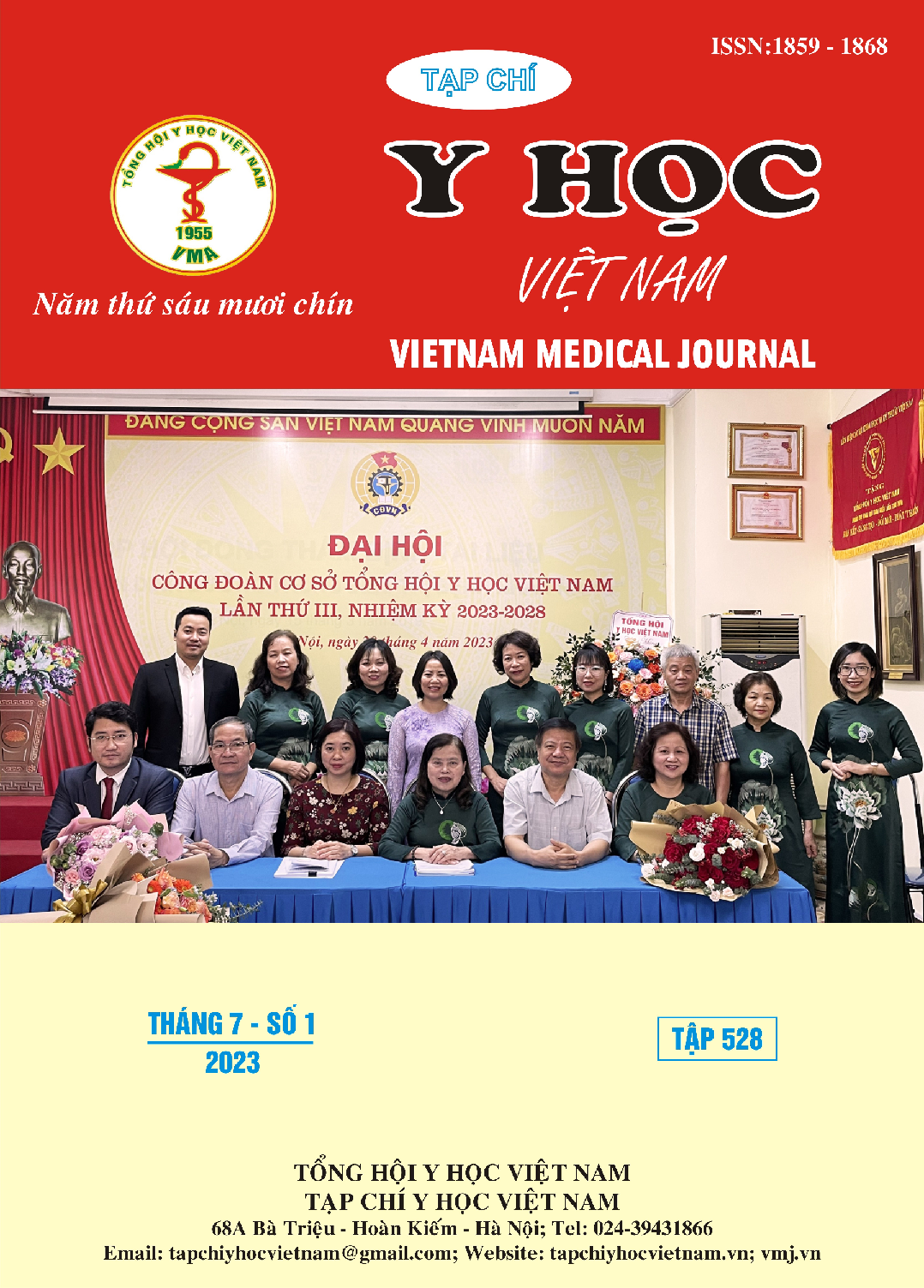ASSESSMENT OF THE STABILITY OF IMPLANT POSTERIOR MANDIBULAR ON PATIENTS USING STEREOLITHOGRAPHY SURGICAL GUIDE AT IMMEDIATELY AND AFTER 3 MONTHS IMPLANT TREAMENT IN CAN THO UNIVERSITY OF MEDICINE AND PHARMACY HOSPITAL
Main Article Content
Abstract
Background: The stability of the implant is a clinical condition that does not shake the implant, which is also the proposed definition for the concept of bone integration. Achieving and maintaining implant stability is one of the prerequisites for successful implant prosthetics. A stable implant can exhibit varying degrees of stability (i.e., degree of mobility). deflection or resistance to force varies), depending on factors related to bone, surgical technique, and implant design. Objectives: To evaluate the stability of the implant after implant treatment in the 1st and 2nd lower jaw in patients using stereolithography surgical guide after implantation and 3 months after implantation. Materials and methods: All implants were surgically performed at the Department of Odonto-Stomatology - Can Tho University of Medicine and Pharmacy Hospital from March 2021 to June 2022. Research facilities - Galileos CBCT scanner of Sirona, Germany, the disc stores the patient's CBCT images as DICOM data. Trios 3 scanning system to convert jaw sample data into digital data with STL (standard template library) data format.- Blue Sky Plan software designs guide tray for dental implant surgery. Results: The difference in implant torque by gender, bone density, implant diameter and length was not statistically significant (p>0.05). The average implant stability at the time immediately after surgery was 74.39 ISQ, all were > 60 ISQ, in which group ≥70 ISQ accounted for the majority with 27 positions accounting for 84.4%, followed by group 65 - 69 ISQ with 3 positions accounting for 9.4%. After 3 months, it increased to 75.69 ISQ and the difference was statistically significant (p=0.01). Conclusion: The implant torque of 30-35 Ncm group accounted for the majority with 63%, the average ISQ index recorded at the time of implantation was 74.41 ± 5.55. After 3 months, the ISQ index increased to 75.72 ± 5.34
Article Details
Keywords
stereolithography surgical guide, stability, ISQ.
References
2. Đàm Văn Việt (2013) Nghiên cứu điều trị mất răng hàm trên từng phần bằng kỹ thuật implant có ghép xương, Luận án tiến sĩ y học, Trường Đại học Y Hà Nội.
3. Gültekin A, Şirali A, Gültekin P, et al. (2016), Clinical evaluation of the stability of implants placed at different supracrestal levels, Journal of Istanbul University Faculty of Dentistry, 50 (3):21-31.
4. Kotsovilis s, Fourmousis I, Karoussis IK, et al. (2009), A systematic review and meta-analysis on the effect of implant length on the survival of rough-surface dental implants, Journal of Periodontology, 80 (11):1700-1718.
5. Lages F S.,Oliveira DW D, Costa FO (2018), Relationship between implant stability measurements obtained by insertion torque and resonance frequency analysis: A systematic review, Clinical implant dentistry and related research, 20 (1):26-33.
6. Meredith N., Shagaldi F., Alleyne D., et al. (1997), The application of resonance frequency measurements to study the stability of titanium implants during healing in the rabbit tibia, Clinical oral implants research, 8 (3):234-243.
7. Misch C. E.,. Goodacre C. J,. Finley J. M, et al. (2005), Consensus conference panel report: crown-height space guidelines for implant dentistry-part 1, Implant dentistry, 14 (4):312-321.
8. Schnutenhaus S, Brunken L, Edelmann C, et al. (2020), Alveolar ridge preservation and primary stability as influencing factors on the transfer accuracy of static guided implant placement: a prospective clinical trial, BMC oral health, 20 (1):1-11.
9. Sarfaraz H, Johri S, Sucheta P, et al. (2018), Study to assess the relationship between insertion torque value and implant stability quotient and its influence on timing of functional implant loading, The Journal of the Indian Prosthodontic Society, 18 (2):139-146.
10. Sennerby L, Meredith N (2008), Implant stability measurements using resonance frequency analysis: biological and biomechanical aspects and clinical implications, Periodontol 2000, 47:51-66.


